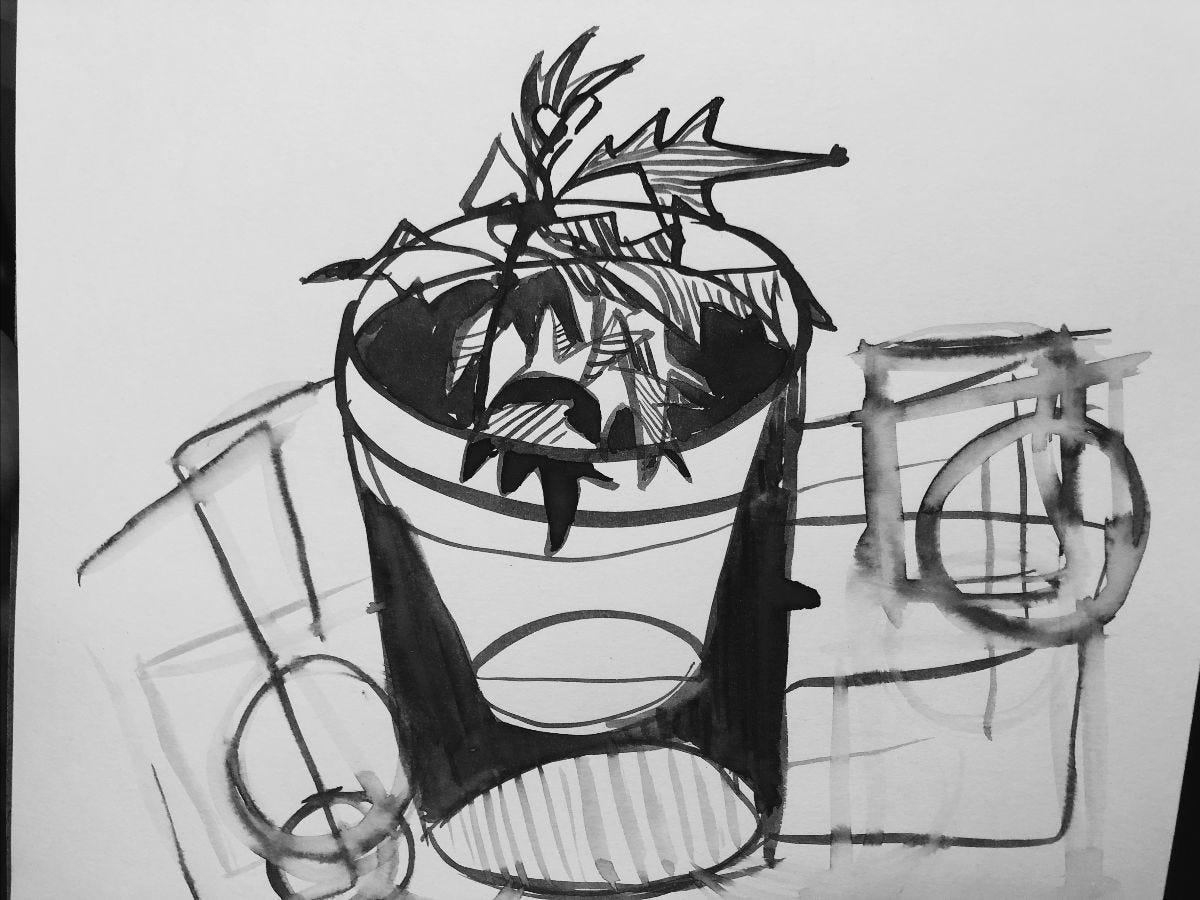Note: This was originally posted in my newsletter, Art Out the Dark, on March 2, 2021. If you’d like to read the other posts in this series, you can read them all here.
If you’re unfamiliar with the concept of negative space in art, this is a nice essay about it. What Are Negative Spaces In Art?
Negative space creates definition. It creates tension in order to hold the positive space. The space in between objects and forms is important dynamic. As art imitates life, the spaces in between emotionally, spiritually, physically are important. I think rest and quiet is a big part of this. For those of us observing Lent: Jesus’ presence was proceeded by 400 years of silence. It’s that Miles Davis quote: “It’s not the notes you play, it’s the notes you don’t play.”
Elemental Exercises
For supplies, you'll need a mark-making tool (I'd recommend anything that isn't a brush this time) and a few sheets of paper.
The times on these exercises are suggestions. If you need more or less, totally find. Just pay attention to what you need. And if your curiosity carries you off into another direction, follow it! These are all simply starting points.
Warmup Scribble (1 min)
Set a timer and scribble as much as you can over 1 minute. Just let your mark-making tool move, try to fill up on your page as much as you can. This is to get your art body moving and releasing the judgement of making something perfect. It’s your transition from production to play-mode.
Negative Space Lace (15 min)
1. Fill your page with organic circle shapes. They can be any size, the edges need to touch each other. If you find yourself getting too orderly or precious, try doing the circles with your non-dominant hand (like I did here).
2. Fill in the space between the circles with lines. They can be any direction you choose. All you need to do is respond to that space.
3. Hold these questions while you work: Where are you currently craving connection? Where does your soul feel disconnected?
Overlapping Shapes (15 min)
There's a two options you can start with. Either way, I'd highly recommend only spending a few minutes working on your shapes. This isn't the time for perfection, it's to give you a framework so you don't need to think about it too much.
Option 1: Find either an object that has overlapping shapes, such a plant or fruit bowl. Something that has lots visible layers. Reduce this scene to super basic shapes (such as circles, squares, etc.). Goal of this exercise isn’t realism, so don’t spend too much time trying to get it right. Draw all the shapes overlapping each other, kind of like an x-ray.
Option 2: If the first option this isn’t an easy find, use an object to trace on your page to make repeating lines. Have done this with the bottom of my glass, a credit card, my phones etc. Or just freehand shapes as you please. (Compliments to Julie for this one!)
3. Once your shapes are laid down, take a moment to look and respond to the spaces between shapes. This part will take a bit of faith and curiosity: choose which areas to fill in. There’s no right or wrong way to do this part. Respond to your instinct about this.
4. As you explore the in between, take a moment to think about where you feel connected that you want more of. Where are you connected that you wish to disconnect?
If you'd like to try this in your sketching, here's an artful example from an excellent instructor: Flowers. Fruits & Vegetables by Paul Wang










This is my first read of your posts, and I find them very insightful. You have both knowledge of visual art and knowledge of human consciousness. I am your neighbor in Substack and will recommend your Blog as a source of repair from darkness.